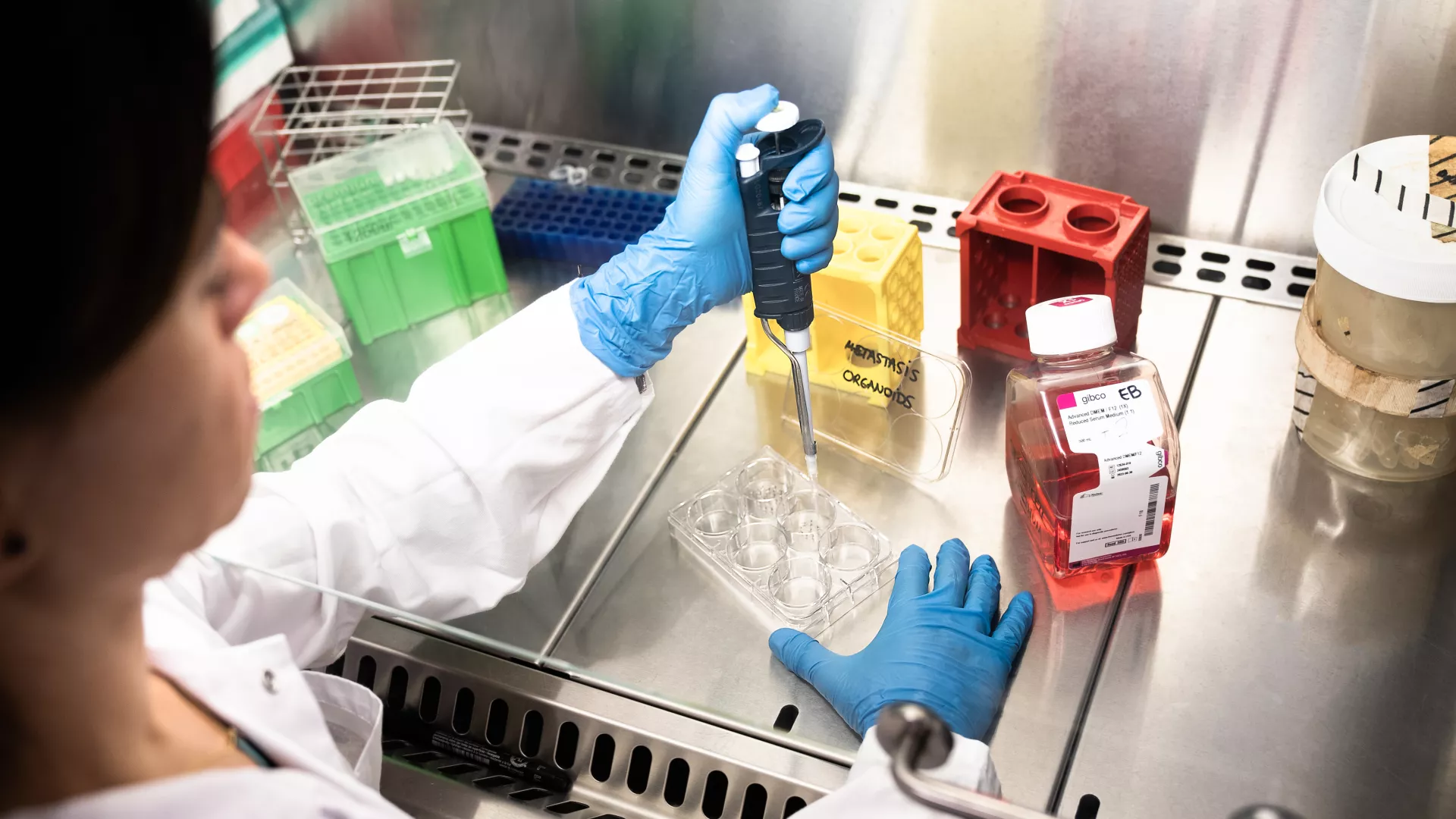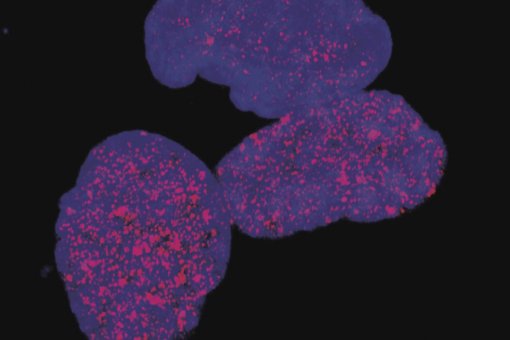Images
Participants



Contact

Researchers at IRB Barcelona describe for the first time how to prepare a specific type of aggregate of the amyloid-beta protein with the ability to perforate the cell membrane.
What causes neuron death and the subsequent cognitive decline in Alzheimer´s disease is still unknown.
The brains of millions of people suffering from Alzheimer´s disease are slowly and inescapably being depleted of neurons. However, the cause of neuronal death is still unknown. Several studies propose that the interaction of the amyloid-beta protein with the neuronal membrane causes neurotoxicity.
Today, a study headed by associate researcher Natàlia Carulla, in the Peptides and Proteins Laboratory at the Institute for Research in Biomedicine (IRB Barcelona), in collaboration with scientists at the University of Leuven (Belgium), the University of Groningen (the Netherlands), and the Technical-Scientific Services of the University of Barcelona, describes for the first time a strategy through which to obtain a membrane-associated amyloid-beta aggregate that adopts a specific barrel-like structure. This type of structure—which is present in other proteins found in nature— has the capacity to form pores in cell membranes. Interpreted in the context of Alzheimer´s disease, this discovery suggests that the aggregate can also perforate the membrane of neurons, alter the equilibrium of these cells, and trigger their death.
The description of the barrel-shaped aggregates in the journal Proceedings of the National Academy of Sciences (PNAS) is the first step to establish the involvement of this aggregate in Alzheimer´s disease. Confirming the involvement would validate it as a new therapeutic target for this condition. The scientists made this discovery in the lab by studying amyloid-beta protein in simple membrane model systems.
Attack to the amyloid-beta protein
Dr. Natàlia Carulla develops methods to identify the nature and structure of the toxic amyloid-beta species. “Everyone talks about the relevance of oligomers (aggregates made of the same protein unit) of amyloid-beta and their contribution to Alzheimer´s disease, but if we don’t know which structural features characterize them, we won’t know what to look for, and therefore we won’t be able to demonstrate or disprove anything,” explains Carulla. “We don’t know whether this species is neurotoxic, but now that we know that it adopts a specific barrel-like structure, we can study it in the context of the disease since we know what to look for,” say Montserrat Serra-Batiste and Martí Ninot-Pedrosa from IRB Barcelona, first and second authors of the paper, respectively.
The next steps involve obtaining the 3D structure of the aggregate and obtaining specific antibodies that recognize it. Afterwards, the researchers will study the function of this aggregate in cultured neurons derived from patients with Alzheimer´s disease. These will be decisive experiments for the validation of this specific amyloid-beta aggregate as a therapeutic target.
Natàlia Carulla’s research is supported by funds from “La Marató de TV3”, awarded in 2014, and the “Plan Nacional” and ERDFs from the Ministry of Economy and Competitiveness.
Reference article:
Montserrat Serra-Batiste, Martí Ninot-Pedrosa, Mariam Bayoumi, Margarida Gairí, Giovanni Maglia, and Natàlia Carulla
Aβ42 assembles into specific β-barrel pore-forming oligomers in membrane-mimicking environments
PNAS (2016) doi: http://www.pnas.org/cgi/doi/10.1073/pnas.1605104113
About IRB Barcelona
The Institute for Research in Biomedicine (IRB Barcelona) pursues a society free of disease. To this end, it conducts multidisciplinary research of excellence to cure cancer and other diseases linked to ageing. It establishes technology transfer agreements with the pharmaceutical industry and major hospitals to bring research results closer to society, and organises a range of science outreach activities to engage the public in an open dialogue. IRB Barcelona is an international centre that hosts 400 researchers and more than 30 nationalities. Recognised as a Severo Ochoa Centre of Excellence since 2011, IRB Barcelona is a CERCA centre and member of the Barcelona Institute of Science and Technology (BIST).





